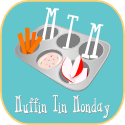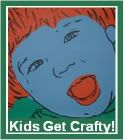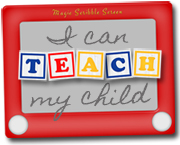For the past couple of weeks,
the kiddos have been learning about
the different rock types:
Sedimentary, Igneous, and Metamorphic
Here are some of the hands-on activities
we completed
while learning about their differences...
(All of the activities below come from
*****************************************
Sedimentary Rocks
Sedimentary rocks are formed from
consolidated clay sediments.
We made a model for how
Sedimentary Rocks form
using a jar, sand, dirt, rock fragments, and water.
We put all of these ingredients together...
...and then shook them up really well.
After 5 minutes of letting the jars sit still,
the kiddos then drew their observations of the jars.
Then we let the jars sit overnight...
...and observed/recorded what the jars looked like
in the morning.
After discussing why they looked different,
the kiddos observed some sample of different
Sedimentary rocks.
**********************************************
Igneous Rocks
Igneous rocks are formed from the
solidification of molten magma.
Now,
we could not go to a volcano and watch magma cool,
First,
I tried to make a solution of saturated salt water,
and then we put pip cleaners in the salt water,
hoping to see crystals grow.
It didn't happen.
(I think the water did not have enough salt
dissolved in it...)
So,
we did the next best thing...
Using crystal kits from
The Dollar Tree,
we followed the kit directions for making the crystals,
and then set them in different locations
in the house.
The kiddos observed and recorded their growth
over the course of five days.
Here are the results:
Sample 1 grew on the counter top at room temperature,
sample 2 grew in the refrigerator,
and sample 3 grew in a desk drawer.
Day 1
Day 3
Day 5
When the 5 days were over,
the kiddos saw how temperature and location affected
the crystal growth.
Igneous rocks are the same way.
Obsidian rock looks very different from pumice,
and both are igneous.
It all has to do with the speed the magma cools
and the location of where it cools.
Besides growing crystals,
we also spent some time
observing different types of Igneous rocks.
************************************************
Metamorphic Rocks
Metamorphic rocks are rocks
that are altered under pressure and heat.
To get an idea of how these rocks are formed,
we got to make a fun snack...
I threw together some Rice Krispie treats
with bits of Heath candy bars in them,
and M&Ms on top of the them.
The candy bits represented
different sediments/layers in rocks
before they under go extra pressure and heat.
After each kiddo got a treat and recorded their observations,
they wrapped the treats in aluminum foil.
Then they squashed the treats and
recorded their observations;
stood on the treats and
recorded their observations...
...and then ironed the treats
ans recorded their observations.
The treats definitely "morphed"
under all the pressure and heat-
but they still tasted good! ;0)
After the treats...
...the kiddos looked at samples of real
Metamorphic rocks, too.
We are greatly enjoying our
"Rock On!" study so far.
Next week,
I will be posting about some more fun ways
we "ate up" information
about these different rock forms...
***************************************
Linking up
with

















































What a great unit! I love all the activities you did to learn about the different types of rocks. I've pinned this post to my Rocks and Minerals board because I would definitely like to try some of these activities with my kids when we get around to doing our rocks and minerals unit.
ReplyDeleteI love your experiments. What fun and what learning.
ReplyDeleteHmph, I might have to break down and make a geology board at some point, there's just a lot of fun ideas for it.
ReplyDeleteCan I just say I LOVE AIMS units!